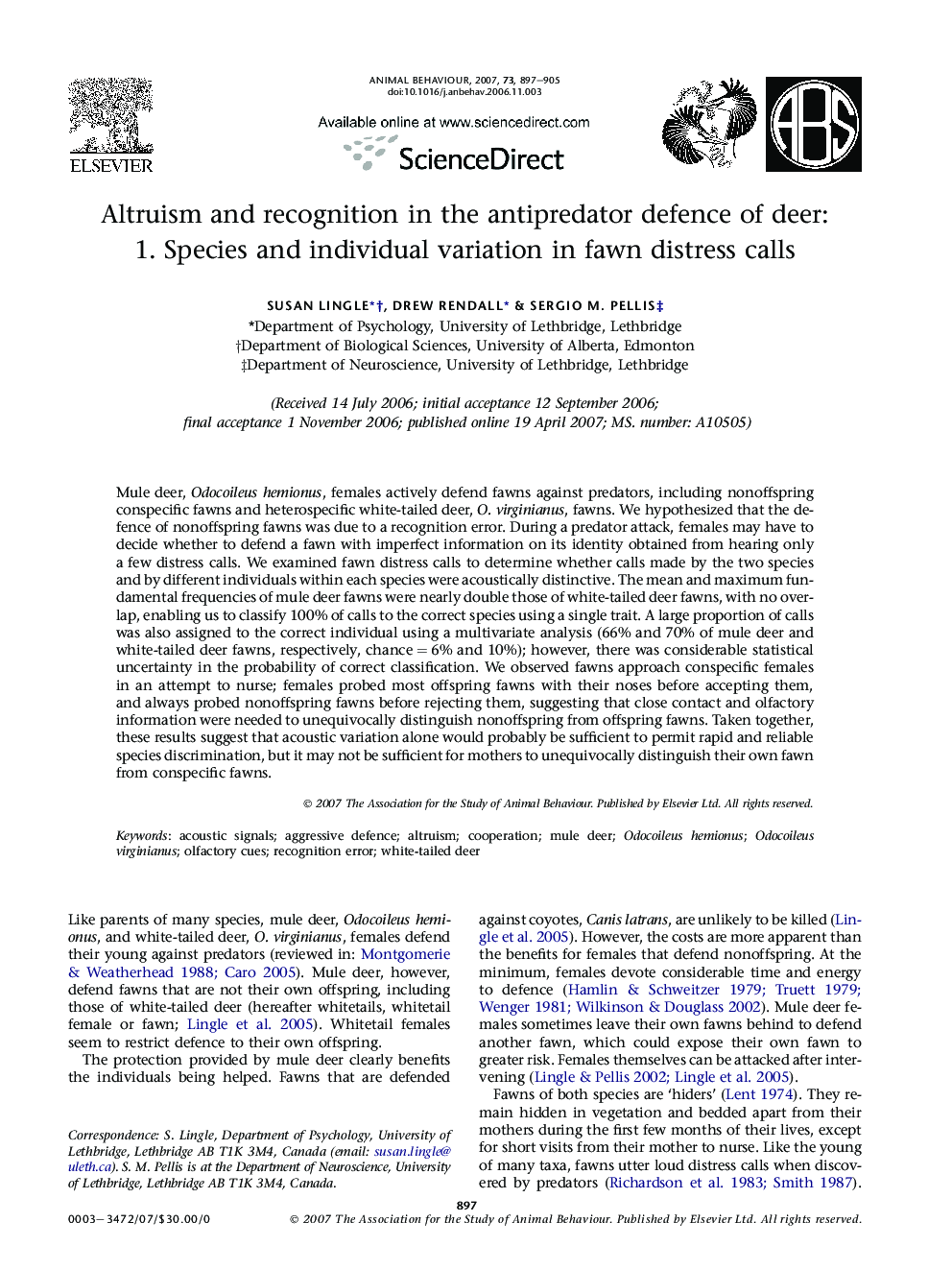| کد مقاله | کد نشریه | سال انتشار | مقاله انگلیسی | نسخه تمام متن |
|---|---|---|---|---|
| 2419002 | 1104362 | 2007 | 9 صفحه PDF | دانلود رایگان |

Mule deer, Odocoileus hemionus, females actively defend fawns against predators, including nonoffspring conspecific fawns and heterospecific white-tailed deer, O. virginianus, fawns. We hypothesized that the defence of nonoffspring fawns was due to a recognition error. During a predator attack, females may have to decide whether to defend a fawn with imperfect information on its identity obtained from hearing only a few distress calls. We examined fawn distress calls to determine whether calls made by the two species and by different individuals within each species were acoustically distinctive. The mean and maximum fundamental frequencies of mule deer fawns were nearly double those of white-tailed deer fawns, with no overlap, enabling us to classify 100% of calls to the correct species using a single trait. A large proportion of calls was also assigned to the correct individual using a multivariate analysis (66% and 70% of mule deer and white-tailed deer fawns, respectively, chance = 6% and 10%); however, there was considerable statistical uncertainty in the probability of correct classification. We observed fawns approach conspecific females in an attempt to nurse; females probed most offspring fawns with their noses before accepting them, and always probed nonoffspring fawns before rejecting them, suggesting that close contact and olfactory information were needed to unequivocally distinguish nonoffspring from offspring fawns. Taken together, these results suggest that acoustic variation alone would probably be sufficient to permit rapid and reliable species discrimination, but it may not be sufficient for mothers to unequivocally distinguish their own fawn from conspecific fawns.
Journal: Animal Behaviour - Volume 73, Issue 5, May 2007, Pages 897–905